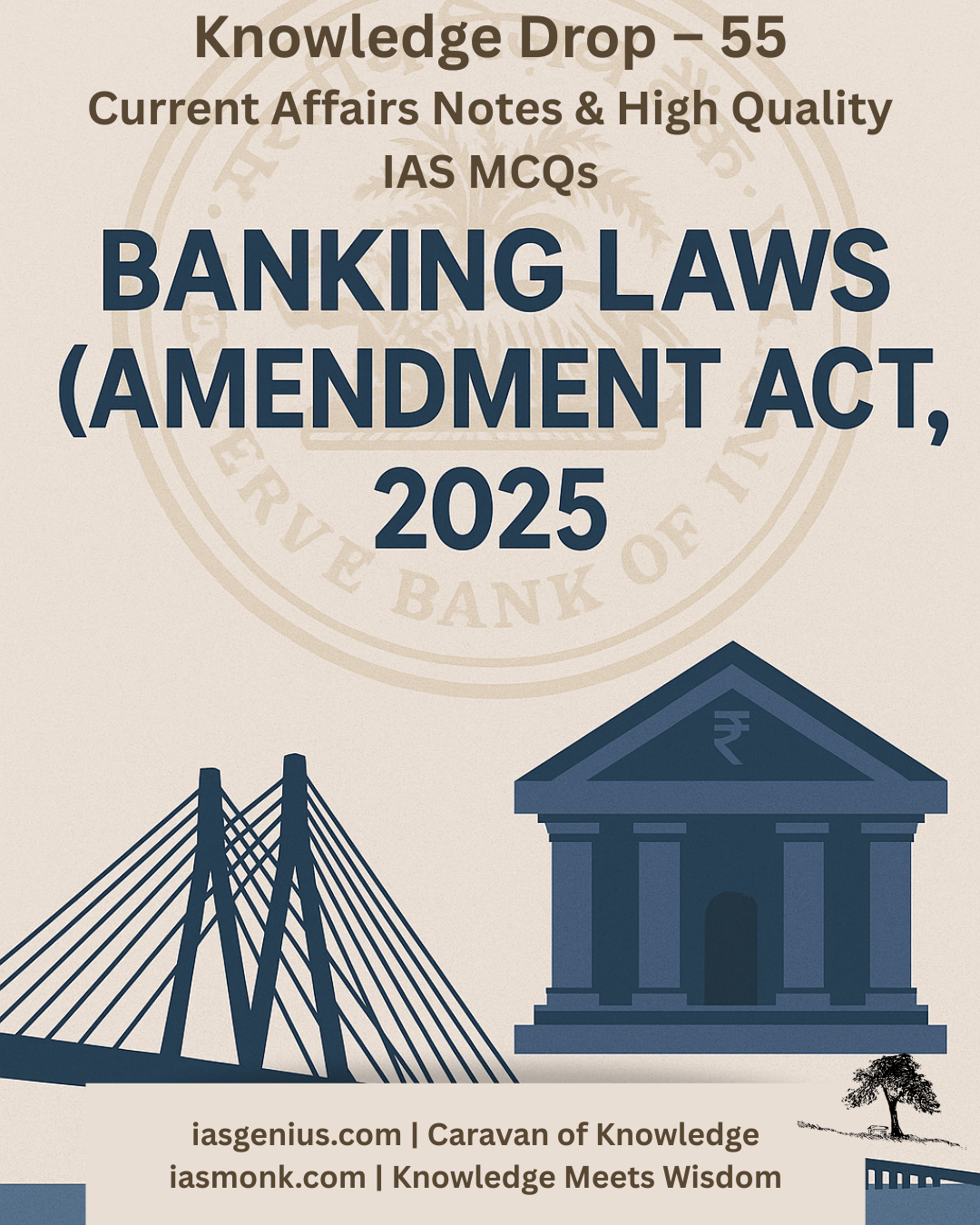
🧭June 23, 2025 Post 3: 🌿 Global Classrooms in Indian Cities: Will Foreign Universities Reshape Higher Education? | High Quality Mains Essay: Insects vs. Infections: A Natural Defence Against Antimicrobial Resistance | For IAS-2026 :Prelims MCQs
Global Classrooms in Indian Cities: Will Foreign Universities Reshape Higher Education?

NATIONAL HERO — PETAL 003
🗓️ Post Date: June 23, 2025
📚 Thematic Focus: Education Reforms | GS Paper 2
🌼 OPENING WHISPER:
A nation’s mind can only rise as high as the classroom ceiling allows.
🔍 KEY HIGHLIGHTS
• The UGC’s 2023 Regulation now allows top foreign universities to establish campuses in India.
• Campuses are planned in GIFT City and Navi Mumbai.
• NYU, Yale-NUS serve as global precedents.
• Factors pushing western universities: declining enrolments, policy tightening, budget cuts.
• Pull factors in India: massive youth base, NEP 2020, rising aspirations.
• Anticipated benefits: reduced brain drain, international degrees at lower cost, research synergy.
• Challenges: affordability, limited reach, operational issues, risks of failure.
📘 CONCEPT EXPLAINER
Foreign Higher Educational Institutions (FHEIs) in India – Regulation 2023
• Enables top-500 QS-ranking universities to set up campuses.
• Offers operational freedom on fee structure, curriculum, hiring.
• Aligns with NEP 2020’s vision of “Internationalisation at Home.”
• Also seeks to reduce India’s annual $60 billion education outflow.
📌 GS PAPER MAPPING
GS Paper 2: Governance & Social Justice
– Government policies and interventions in the education sector
– Issues related to quality of higher education
– International cooperation in knowledge sharing
– Role of regulatory bodies (UGC, NAAC)
💭 A THOUGHT SPARK — by IAS Monk
“If ancient India attracted seekers to Nalanda and Takshashila, perhaps modern India too can become a lighthouse—only if we ensure that imported glow does not dim native wisdom.” 🌱
High Quality Mains Essay For Practice :
Word Limit 1000-1200
Global Classrooms in Indian Cities: Will Foreign Universities Reshape Higher Education?
In the evolving story of India’s education reforms, a new chapter is being written with the entry of foreign universities into Indian soil. Spurred by the University Grants Commission’s 2023 Regulations and guided by the National Education Policy (NEP) 2020, this strategic shift promises to rewrite the trajectory of Indian higher education. At its core lies a bold aspiration: to make India not just a consumer of global knowledge but a hub of its creation and exchange.
The arrival of foreign institutions is not merely an academic move—it reflects broader geopolitical, economic, and social transformations. Countries in the Global North—facing demographic stagnation, tightening immigration policies, and declining university revenues—are now compelled to look eastward, toward younger and more aspirational nations like India. Meanwhile, India, home to the world’s largest youth population and a thriving middle class, seeks world-class institutions on its own terms. It is this convergence of push and pull that makes the moment ripe for reimagining the global map of education.
The rationale for India’s openness is manifold. First, it addresses the longstanding paradox in India’s higher education system: while Indian students continue to excel globally, many domestic institutions still struggle to provide world-class education. With over $60 billion spent annually by Indian families on foreign education, the potential for savings—and access—is enormous. Foreign university campuses can offer global degrees at lower costs and within familiar cultural contexts, thereby democratizing access to quality education.
Second, such campuses can help curb India’s persistent brain drain. Every year, thousands of India’s brightest minds seek academic and professional futures abroad, often never returning. By establishing international-quality institutions at home, the country can retain talent, foster innovation, and integrate its youth more deeply into the national development agenda.
Third, these foreign outposts could become nuclei of academic excellence, industry collaboration, and research ecosystems. Strategic locations like Gujarat International Finance Tec-City (GIFT City) and Navi Mumbai are envisioned not just as campuses, but as edu-economic zones where academic inquiry, entrepreneurship, and real-world problem solving intersect. STEM research, AI, clean energy, and liberal arts could find exciting new confluences here.
Yet, despite its promise, the entry of foreign universities is no magic wand. Many hurdles loom large. The most immediate concern is affordability. If foreign universities replicate their parent campus fee structures, their services may remain accessible only to India’s affluent minority. The risk then is of creating elite islands of privilege, reinforcing educational inequalities rather than reducing them.
Operational uncertainties pose another challenge. Land acquisition, faculty recruitment norms, accreditation alignment, and bureaucratic delays could slow down rollout. Moreover, previous international experiences offer cautionary tales. Several foreign universities that ventured into Malaysia, the UAE, and China either shut down or failed to meet student expectations due to cultural mismatches and poor enrolments. India must avoid similar pitfalls by fostering meaningful academic, social, and regulatory integration.
Furthermore, educational quality must not be presumed—it must be ensured. The role of regulatory bodies like UGC and NAAC becomes paramount. They must establish transparent, accountable quality assurance frameworks, without throttling the autonomy that attracts foreign players in the first place. This balance of freedom and responsibility will determine whether these campuses flourish or falter.
A tiered fee structure, offering scholarships and need-based support, may serve as a viable model for inclusivity. By adopting differential pricing and encouraging philanthropic funding, institutions can widen their access without compromising sustainability. Foreign universities should also be encouraged to form joint ventures with Indian institutions, enabling knowledge exchange, faculty training, and curriculum localization. Such partnerships could create hybrid models that marry global standards with local relevance.
It is equally important that foreign campuses do not become intellectual enclaves. Instead, they should be embedded in the Indian academic ecosystem—engaging with local communities, participating in national-level entrance and scholarship programs, and contributing to research that addresses Indian and global development challenges. Their presence must not dilute India’s cultural identity, but enrich it.
Beyond the walls of these new campuses lies an even greater opportunity: the rebranding of India as a global education destination. Like Nalanda and Takshashila once drew seekers from faraway lands, modern India could again emerge as a beacon of learning. By hosting international students from Africa, South Asia, and the Middle East, India could not only generate soft power but also catalyze South-South cooperation in knowledge and capacity building.
The vision of NEP 2020—to make India a “Vishwa Guru”—is not a nostalgic return to ancient glories but a forward-looking aspiration grounded in openness, excellence, and equity. Foreign universities, if nurtured rightly, can become co-travelers in this journey. But they are not saviors. The real task remains revitalizing India’s own public universities, increasing research investment, improving teacher quality, and fostering interdisciplinary thinking.
Thus, the road ahead demands a dual approach. On one hand, embrace the global—invite the world’s best institutions, learn from their practices, and integrate into the knowledge economy. On the other, strengthen the local—reform governance structures, fund innovation in Indian HEIs, and make public universities aspirational again.
Education is not just about degrees. It is about awakening minds, expanding possibilities, and preparing citizens for an uncertain world. Whether it comes from Harvard or Hyderabad, Oxford or Odisha, what matters is the integrity, purpose, and accessibility of that education.
In conclusion, the entry of foreign universities into India is a significant inflection point. It holds the potential to elevate Indian higher education, reduce dependency on foreign degrees, and position the country as an international knowledge leader. But this potential must be translated through thoughtful policy, inclusive models, and collaborative ecosystems. Only then will the idea of “global classrooms in Indian cities” become not just a slogan, but a symbol of India’s rising intellectual stature in the world.
Target IAS-26: Daily MCQs :
📌 Prelims Practice MCQs
Topic: Foreign Universities in India
MCQ 1 – Type 1: How many of the above statements are correct?
Q. Consider the following statements regarding the entry of foreign universities into India:
1. The UGC Regulations 2023 allow only top-ranking foreign universities to open campuses in India.
2. One of the key pull factors for foreign universities is India’s large youth population and growing middle class.
3. The presence of foreign universities in India is expected to reduce foreign exchange outflows on education.
4. The NEP 2020 encourages the internationalisation of Indian higher education.
How many of the above statements are correct?
A) Only two
B) Only three
C) All four
D) Only one
🌀 Didn’t get it? Click here (▸) for the Correct Answer & Explanation
✅ Correct Answer: C) All four
🧠 Explanation:
•1) ✅ True – The UGC Regulations 2023 permit only top 500 globally ranked universities to establish campuses.
•2) ✅ True – India’s young population and rising aspirations are major incentives.
•3) ✅ True – Bringing foreign education to India reduces forex drain (~$60 billion annually).
•4) ✅ True – NEP 2020 advocates global partnerships and educational internationalisation.
MCQ 2 – Type 2: Two Statements Based
Q. Consider the following two statements:
1. One major reason for foreign universities seeking campuses in India is the demographic decline and financial pressures in their home countries.
2. The UGC and NAAC are responsible for ensuring quality standards in both Indian and foreign universities operating in India.
Which of the above statements is/are correct?
A) Only 1 is correct
B) Only 2 is correct
C) Both 1 and 2 are correct
D) Neither 1 nor 2 is correct
🌀 Didn’t get it? Click here (▸) for the Correct Answer & Explanation
✅ Correct Answer: C) Both 1 and 2 are correct
🧠 Explanation:
•1) ✅ True – Demographic decline and budget cuts in the West are push factors.
•2) ✅ True – UGC and NAAC play regulatory and quality assurance roles in India.
MCQ 3 – Type 3: Which of the statements is/are correct?
Q. Which of the following statements regarding challenges of foreign university campuses in India are correct?
1. High fee structures might restrict access for economically weaker students.
2. Cultural mismatch and low enrolment have led to the failure of some foreign campuses in other countries.
3. Land acquisition and faculty recruitment pose no challenge due to UGC’s automatic clearance.
Select the correct code:
A) 1 and 2 only
B) 2 and 3 only
C) 1 and 3 only
D) 1, 2 and 3
🌀 Didn’t get it? Click here (▸) for the Correct Answer & Explanation
✅ Correct Answer: A) 1 and 2 only
🧠 Explanation:
•1) ✅ True – Concerns exist if tuition mirrors foreign fee models.
•2) ✅ True – Notably in UAE, Malaysia, and China, some campuses underperformed.
•3) ❌ False – Land and operational issues still require navigation despite policy liberalisation.
MCQ 4 – Type 4: Direct Fact
Q. Which city is currently being developed as a hub for foreign university campuses in India under the 2023 UGC Regulations?
A) Bengaluru
B) GIFT City
C) Hyderabad
D) Kochi
🌀 Didn’t get it? Click here (▸) for the Correct Answer & Explanation.
✅ Correct Answer: B) GIFT City
🧠 Explanation:
••GIFT City (Gujarat International Finance Tec-City) is a key zone being developed as an educational and financial hub where top foreign universities are invited to establish campuses.

















